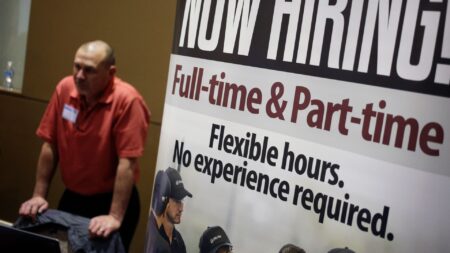One of the pillars of behavioral economics is the so-called prospect theory, the idea that the pain of a loss is far greater than the expectation of a gain. That insight, developed by Daniel Kahneman , winner of the 2002 Nobel Memorial Prize in Economic Sciences, was very much in evidence on Thursday as the S & P 500 dropped 100 points in the final two hours and thirty minutes of trading. On Thursday, President Joe Biden spoke with Israel’s Prime Minister Benjamin Netanyahu, calling for an immediate ceasefire in Gaza and more protection for aid workers. News reports that Israel was preparing for possible retaliation from Iran also surfaced. Bond prices rose, yields declined, and oil rallied . Later in the day, Neel Kashkari, President of the Federal Reserve Bank of Minneapolis, said that if inflation continues to move sideways, then he wondered whether the Fed should cut rates at all this year. Despite Thursday’s declines, the S & P 500 is only 2% from last week’s record highs. The surprise isn’t that the S & P 500 dropped Thursday. It’s that it’s been so steady The S & P 500 has been on an upward path for a remarkable five straight months, largely because earnings expectations for the first quarter and this year have been very stable. .SPX 6M mountain S & P 500, 6 months First-quarter earnings estimates for the S & P 500 have slipped to an expected gain of 5.1%, down from an anticipated increase of 7.2% on Jan. 1, according to LSEG. The decline is not surprising given that estimates usually start high at the beginning of the quarter, and fall somewhat at the very end of the quarter. Reported earnings then typically beat the lower analyst estimates, usually by 3% to 6%. John Butters, senior earnings analyst at FactSet, confirmed that analysts have made smaller cuts than average to first-quarter estimates. What would cause a more serious drop in stocks? Since earnings are what ultimately moves stocks, the question is not “What would cause a modest 2% to 5% decline?” Everyone should expect that, given the gains. Rather, we should ask, “What would cause a bigger decline of 10% or more?” To do that, market participants would need to believe that earnings estimates were off significantly. What would cause a significant drop in earnings? It would typically be some combination of factors: 1) an expectation of a notable decline in the economy, particularly in jobs, 2) a notable and sustainable spike in interest rates, and 3) some kind of unexpected exogenous shock (for example: the Arab oil embargo of the 1970s, Covid or war). The first two are not happening, at least not yet. Job growth remains strong — we will see how the March payrolls turn out. Further, there is no sustained spike in rates — for the time being. An exogenous shock? Reports that Israel was preparing for possible retaliation from Iran seemed to take the markets by surprise Thursday. What about the current bugaboo, so-called “sticky inflation?” Unfulfilled expectations of rate cuts may take some of the air out of the market, but it seems unlikely that the market would drop 10% just on that alone. Not without a significant deterioration in the economy. A 10% drop in the market is more common than you think If you think a 10% drop in the market is unlikely or would be a catastrophe, neither would be the case. Market declines of 10% or more are very common. It turns out, investors worry a lot about economic weakness or exogenous shocks and how they might affect earnings. A 2022 study from Charles Schwab looked at stock market declines over from 2002 to 2021. The analysis found that a decline of at least 10% occurred in 10 out of 20 years, or 50% of the time, with an average pullback of 15%. “Despite these pullbacks, however, stocks rose in most years, with positive returns in all but 3 years and an average gain of approximately 7%,” the report said. So buckle up. People who think notable declines are uncommon suffer from recency bias: Because the market has gone almost straight up for the past 18 months, they think that is the natural direction for stocks for the foreseeable future. They would be mistaken.
Read the full article here











